
Advanced Powder Materials
Scope & Guideline
Catalyzing Research in Advanced Materials
Introduction
Aims and Scopes
- Advanced Materials Synthesis:
The journal publishes studies on novel synthesis methods for advanced materials, including powder metallurgy, additive manufacturing, and nanostructured materials, highlighting innovative approaches and their implications on material properties. - Characterization Techniques:
Research articles emphasize the importance of advanced characterization techniques to understand the microstructure and properties of powder materials, including in-situ methods, spectroscopy, and microscopy. - Energy Storage and Conversion:
There is a significant focus on materials for energy applications, including batteries, supercapacitors, and fuel cells, with an emphasis on improving efficiency, capacity, and stability of these systems. - Catalysis and Photocatalysis:
The journal covers research on catalysts and photocatalysts, exploring new materials and mechanisms that enhance catalytic activity and selectivity for applications such as CO2 reduction and water splitting. - Functional Materials and Devices:
Research on the development of functional materials, including piezoelectric, magnetic, and optical materials, aimed at various applications such as sensors, actuators, and electronic devices. - Environmental and Sustainability Applications:
The journal highlights studies on materials designed for environmental remediation and sustainable practices, addressing the challenges of pollution and resource management.
Trending and Emerging
- 3D Printing and Additive Manufacturing:
Recent publications show a surge in research related to 3D printing and additive manufacturing, emphasizing the development of new materials and processes that enhance the capabilities and applications of these technologies. - High-Entropy and Complex Alloys:
There is an increasing interest in high-entropy alloys and complex multicomponent systems, driven by their unique properties and potential applications in extreme environments. - Electrocatalysis and Energy Conversion:
Emerging themes in electrocatalysis for energy conversion technologies, such as hydrogen production and CO2 reduction, reflect the journal's commitment to addressing global energy challenges. - Nanostructured and Multifunctional Materials:
Research on nanostructured materials that exhibit multifunctional properties is gaining traction, with a focus on their applications in electronics, energy storage, and environmental remediation. - Sustainability and Eco-friendly Materials:
There is a growing trend towards the development of sustainable materials and eco-friendly processes, highlighting the importance of environmental considerations in materials science.
Declining or Waning
- Traditional Powder Metallurgy Processes:
There has been a noticeable decrease in publications focused solely on conventional powder metallurgy processes, as the field shifts towards more innovative and advanced techniques such as additive manufacturing. - Conventional Ceramic Materials:
Research specifically centered on traditional ceramic materials has diminished, with a growing emphasis on advanced, multifunctional ceramics that incorporate novel synthesis and modification strategies. - Single-Component Materials:
There is a declining trend in studies focusing on single-component materials, as researchers increasingly explore composite and hybrid materials that leverage synergies between different phases and components.
Similar Journals
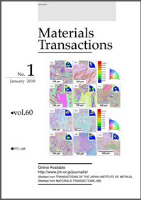
MATERIALS TRANSACTIONS
Your Gateway to Cutting-Edge Materials ResearchMATERIALS TRANSACTIONS, published by the Japan Institute of Metals & Materials, stands as a pivotal journal in the fields of Condensed Matter Physics, Materials Science, and Mechanical Engineering. Operating since 1993, this peer-reviewed journal aims to disseminate high-quality research that advances our understanding of material properties and behaviors under varied conditions. With an ISSN of 1345-9678 and an E-ISSN of 1347-5320, it provides open access options, ensuring that the latest findings are readily available to a global audience. The journal currently holds a commendable Q3 ranking across multiple categories, underscoring its relevance and impact in the respective fields. Located in Sendai, Japan, MATERIALS TRANSACTIONS has emerged as a vital resource for researchers, professionals, and students alike, fostering innovation and collaboration in material science and engineering methodologies. As the demand for advanced materials continues to rise, this journal serves as an essential platform for sharing and discussing cutting-edge research and developments.
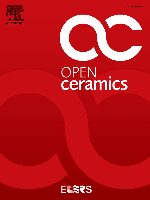
Open Ceramics
Exploring New Frontiers in Ceramic ApplicationsOpen Ceramics is a pioneering journal published by Elsevier, dedicated to the field of materials science, with a particular focus on ceramics and composites. Launched in 2020, this Open Access journal aims to facilitate unrestricted dissemination of cutting-edge research findings while promoting innovative developments in the utilization of ceramic materials across various applications. As of 2023, Open Ceramics has established a commendable presence in several key categories, achieving Q3 in Biomaterials and Q2 rankings in Ceramics and Composites, Electronic, Optical and Magnetic Materials, and Materials Chemistry. The journal's broad scope appeals to a diverse audience of researchers, professionals, and students interested in the advancements within this essential domain of materials science. With a commitment to quality and relevance, Open Ceramics provides a platform for rigorous peer-reviewed research, thereby enhancing the global dialogue in the field and contributing to the ongoing progress of materials innovation.
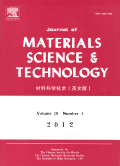
Journal of Materials Science & Technology
Elevating Knowledge in the Science of MaterialsThe Journal of Materials Science & Technology, published by JOURNAL MATER SCI TECHNOL in China, is a leading forum for the latest research in the multidisciplinary field of materials science. With the ISSN 1005-0302 and E-ISSN 1941-1162, this esteemed journal boasts an impressive impact factor and has established itself as a vital resource for professionals, researchers, and students alike. Covering a wide range of topics, including ceramics, composites, materials chemistry, mechanical engineering, and polymers, it has achieved a coveted Q1 ranking in multiple categories as of 2023, reflecting its position in the top tier of scholarly publications. Notably, the journal excels in its Scopus ranks, placing within the top 5% in categories such as Metals and Alloys and Mechanical Engineering. Aiming to foster knowledge and innovation in material development and application, the journal is committed to facilitating groundbreaking research and collaborations that propel the field forward. With its convergence of insights from 1993 to 2025, the Journal of Materials Science & Technology remains an indispensable resource for the advancement of materials science.
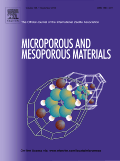
Microporous and Mesoporous Materials
Exploring the Depths of Porosity ScienceMicroporous and Mesoporous Materials is a leading academic journal published by ELSEVIER, specializing in the field of porosity characterization and applications of microporous and mesoporous materials. With an impactful Q1 ranking in various categories, including Chemistry, Condensed Matter Physics, and Materials Science, this journal serves as a vital resource for researchers, professionals, and students focused on advancing the understanding and application of these materials. Established in 1998 and set to continue its influence until 2024, the journal's rigorous peer-review process ensures the dissemination of high-quality research findings. Additionally, its commitment to open access publishing broadens accessibility, fostering an inclusive community dedicated to innovation in nanoscience, materials physics, and engineering. The journal's Scopus rankings highlight its prestigious standing, placing it among the top percentile within pertinent fields. For those engaged in cutting-edge research or education within these sectors, Microporous and Mesoporous Materials remains an essential journal for current advancements and insights.
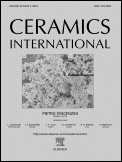
Ceramics International
Elevating the standards of ceramics research worldwide.Ceramics International is a premier journal published by ELSEVIER SCI LTD, focusing on advancing the field of materials science with a specific emphasis on ceramics and composites. With an impressive impact factor and a top-tier standing in several critical categories, including Q1 rankings in Ceramics and Composites, Electronic, Optical and Magnetic Materials, and Materials Chemistry, this journal serves as a crucial resource for researchers and professionals alike. Established in 1981, it has consistently showcased cutting-edge research in various domains, including surfaces, coatings, and process chemistry technologies, making it invaluable for those advancing theoretical and practical knowledge in these areas. While access is through subscription, the journal’s rich content, profound insights, and rigorous peer-review process ensure high-quality articles that contribute meaningfully to the scientific community. By fostering innovation and collaboration through rigorous research, Ceramics International stands out as an authoritative source for those dedicated to the evolution of materials science.

RUSSIAN JOURNAL OF ELECTROCHEMISTRY
Connecting Researchers with Cutting-Edge Electrochemical InsightsThe Russian Journal of Electrochemistry, published by Pleiades Publishing Inc, is a reputable scientific resource that caters to the dynamic field of electrochemistry. Since its inception in 1996, this journal has become a platform for the dissemination of cutting-edge research, exploring both foundational studies and innovative applications within electrochemical science. Despite currently holding a Q4 categorization in its field, the journal is dedicated to enhancing its scholarly impact and visibility, reflecting its commitment to fostering advancements in electrochemical technologies. With its ISSN 1023-1935 and E-ISSN 1608-3342, the journal strives to reach a global audience of researchers, professionals, and students alike. Though the journal is not open access, its contents are crucial for anyone looking to stay at the forefront of electrochemical research and developments. The journal's editorial board includes well-respected experts, ensuring that published articles contribute significantly to the scientific community and pave the way for future innovations in the field.

InfoMat
Fostering Collaboration in the World of Materials ScienceInfoMat is a premier open-access journal published by WILEY that serves as a vital resource for scholars and practitioners in the fields of materials science, materials chemistry, and related disciplines. Since its inception in 2019, this journal has rapidly ascended in academic stature, currently holding a prestigious Q1 ranking across multiple categories, including Electronic, Optical and Magnetic Materials, Materials Chemistry, and Surfaces, Coatings and Films, showcasing its significant impact and relevance. With a commendable impact factor and a comprehensive scope, InfoMat provides a platform for high-quality research that drives innovation in the materials domain, appealing to researchers, professionals, and students alike. The journal’s open-access model enhances visibility and accessibility of cutting-edge studies, fostering a collaborative and informed scientific community. Based in the United Kingdom, InfoMat continues to shape the future of materials research through its commitment to excellence and accessibility.
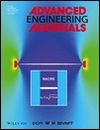
ADVANCED ENGINEERING MATERIALS
Advancing Knowledge in Engineering MaterialsADVANCED ENGINEERING MATERIALS is a leading journal dedicated to the field of materials science, particularly within the realm of condensed matter physics. Published by WILEY-V C H VERLAG GMBH in Germany, this esteemed journal has been a crucial platform for disseminating cutting-edge research since its inception in 1999. With an impressive impact factor and ranked in the top quartiles of its categories, it boasts a Q1 ranking in Condensed Matter Physics and a Q2 rank in related materials science fields as of 2023. ADVANCED ENGINEERING MATERIALS serves a diverse readership, including researchers, industry professionals, and students, striving to advance the understanding and application of innovative materials. Frequent contributions to this journal help bridge theoretical advancements with practical applications, fostering a vibrant academic and industrial dialogue. Although currently not an open-access journal, the insights shared within its pages are pivotal for anyone engaged in the dynamic sectors of engineering and material sciences.
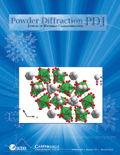
POWDER DIFFRACTION
Connecting Researchers through Pioneering Powder Diffraction StudiesPOWDER DIFFRACTION, published by Cambridge University Press, is a pivotal journal focused on the evolving field of powder diffraction, which is crucial for researchers in condensed matter physics, materials science, and radiation studies. Established in 1986, this journal emphasizes the latest methodological advancements and applications in powder diffraction techniques, making it a comprehensive resource for professionals and students alike. With an ISSN of 0885-7156 and an E-ISSN of 1945-7413, it offers valuable insights into the characterizations of crystalline materials. Although currently not open access, the journal is highly regarded for maintaining rigorous peer review standards, reflecting in its rankings within the lower quartiles of relevant fields according to Scopus. Positioned within the United States and with distribution through Cambridge University Press, POWDER DIFFRACTION aims to foster innovation and knowledge exchange among the global scientific community, thereby solidifying its role as an essential platform for disseminating research findings from 1986 through to 2024 and beyond.
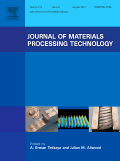
JOURNAL OF MATERIALS PROCESSING TECHNOLOGY
Connecting Researchers to the Future of Materials ScienceJOURNAL OF MATERIALS PROCESSING TECHNOLOGY, published by ELSEVIER SCIENCE SA, is a premier international journal dedicated to the dissemination of cutting-edge research in the field of materials processing. With an impact factor indicative of its high academic quality, this journal features a diverse range of topics, including ceramics, composites, metals, and manufacturing technologies, thereby inspiring innovations within its community. As a recognized Q1 journal across multiple categories—including Ceramics and Composites, Computer Science Applications, Industrial and Manufacturing Engineering, and Modeling and Simulation— it ranks among the top in its field. The journal's rigorous peer-review process ensures the publication of only the most significant and relevant studies, supporting researchers, professionals, and students in advancing their knowledge and expertise. With its commitment to excellence, the JOURNAL OF MATERIALS PROCESSING TECHNOLOGY remains a vital resource for those aiming to push the boundaries of materials science and engineering.